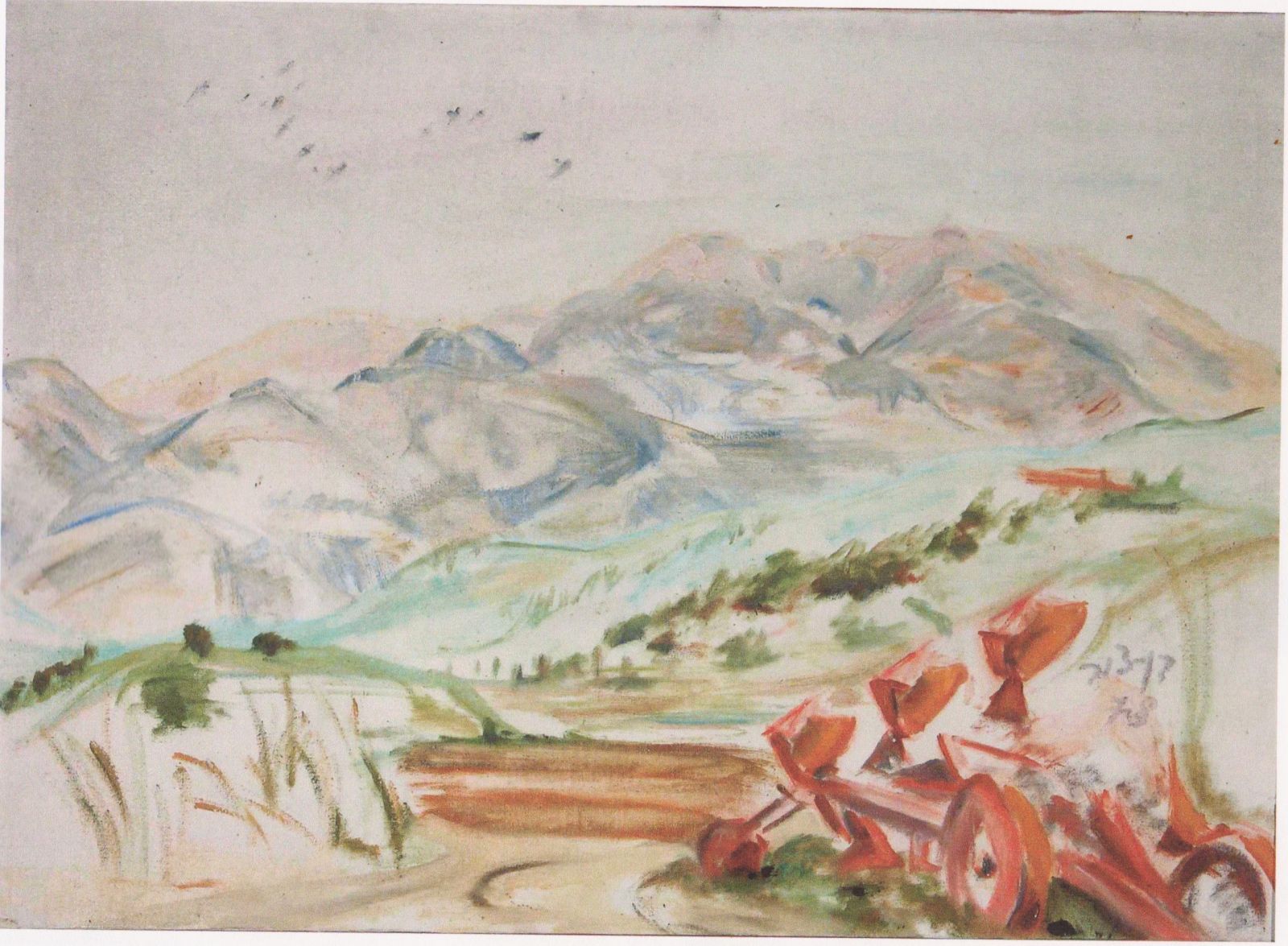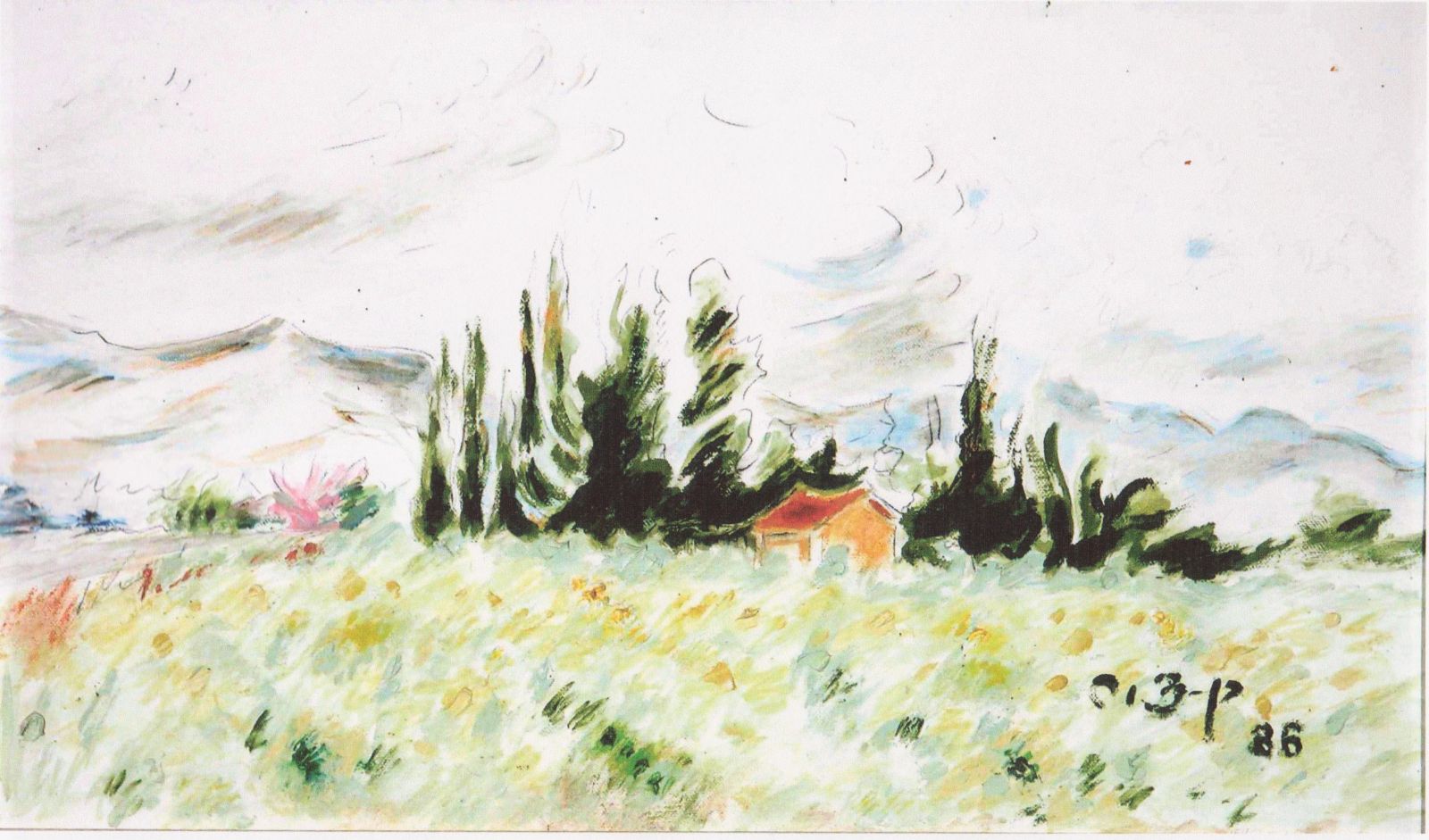History
History
The Kibbutz was founded in 1940 in Karkur (a village near Hadera), by 38 members. One part of the founders belonged to "Kvutzat Olim" (New immigrants group) young immigrants from Europe, who came in the framework of "Youth Alijah" and studied at the high school at Kibbutz Mishmar Ha'emek. The other part was from the "Youth group" from Kibbutz Afikim, members of the "Hashomer Hatza'ir" movement. All of which arrived to Palestine just before WW1 broke out. The Kibbutz members waited in Karkur until a proper location for a permanent settlement was allocated for them.

Five years later, on the 2.11.1945 ( Balfour declaration day) the permanent settlement started on "Lehavot Hill".
The name "Lehavot" stems from a polish book which was translated into Hebrew and evoked great emotions in all readers. After settling down at the foot of the hills the word "Habashan" was added. In those days the hills were called (erroneously) "Hills of Bashan", today Golan Heights. But the name Lehavot-Habashan never changed.
Near the Lehavot Hill dwelt an Arab village called "Chiam-al-Walid". The villagers received the Kibbutz members nicely. Dignitaries attended the inauguration and brought food and refreshments.
Two years later the Kibbutz decided to relocate to the foot of the hill and this is the place of Lehavot Habashan since 1947. The relocation was done for security purposes. Lehavot Hill was widely exposed to the Syrian border – just a few hundred meters away. On top of the hill still stands to this day the only solid building which was used as armory and watch tower (the members lived in wooden huts and tents). The building is called by the locals "the witch house" and was a good theme for many thrilling stories which were told by the teachers and nurses who walked with the children up to the hill.

In those days there were many difficulties: The nearness to the Syrian border, shortage of water and land, the malaria, swamps which were impassable and the difficult rugged and stony area. The first years (12,000 days) were invested in soil preparation, drainage and afforestation. The first solid buildings for living were built only in 1950
During the Independence War the Kibbutz was attacked by Syrian forces: "The big attack on the Kibbutz lasted four days. On the second day of the battle Yaacov Kahane, a Kibbutz member, was killed. At this time, the cemetery of the Kibbutz was in Syrian occupied area, so Yaacov was buried close to the Northern observation tower. When, on the fourth day of the battle, the supply of ammunition ran out, the "PALMACH" sent forces from Kfar Giladi to attack the Syrian forces which occupied the Lehavot Hill. The Kibbutz members, with the assistance of PALMACH succeeded to ward off the Syrian offenses.
At the PALMACH attack on the Syrian forces on the Lehavot Hill, two young Palmachniks were killed. One of them, Dov Shaitovitz, was buried next to the grave of our member Yaacov Kahane. The "Northern tower" serves nowadays as a memorial garden of the Kibbutz. During the war, the Arabic population in the area left their villages and most of them moved towards the Golan Heights.
.jpg)
Since the early fifties the Kibbutz absorbed groups of young people s.a. "Youth groups", Nachal groups and new immigrants from appx. 30 countries.
After the Independence War the members began to cultivate the areas close to the Kibbutz. After the draining of the Hula (1958) the kibbutzim in the area were allocated land officially.
On December 1958 the Syrians shelled the Kibbutz. The Kibbutz dining- hall, the laundry and other structures were hit and destroyed. Houses and wooden huts were partly destroyed. A new dining-hall had to be built, which became a master-piece of public buildings on the kibbutz scene.
In the years before the Six Days War, a net of trenches was dug, to enable connection between the various areas and shelter in case of shelling and shootings from Syria. After the war this threat which lasted 19 years, was removed as the frontier moved east to the Kuneitra area.
In the eighties the Kibbutz was hit, as has happened to many other Kibbutzim, by a severe economic crisis which led to a meaningful leaving of members.
On 2005 the building of the communal expansion in the Kibbutz began. This step was necessary in order to respond to the diminution of the kibbutz population and its aging process. The "expansion" comprises of 111 units, with a qualitative population who contributes to the resumption and flourishing of the Kibbutz.
.jpg)
Today we are looking forward to a blessing absorption of daughters and sons of the Kibbutz who wish to return and adopt a "new member" status. These children will be a central and important part of the Kibbutz life in the future.
From: Chaiah Dagan
Editor: Ofer Michaeli
Translation: Ben-zion Fainstein
Translation Editor: Debbi Rozner
Painting: Abraham Ben-Zoor
